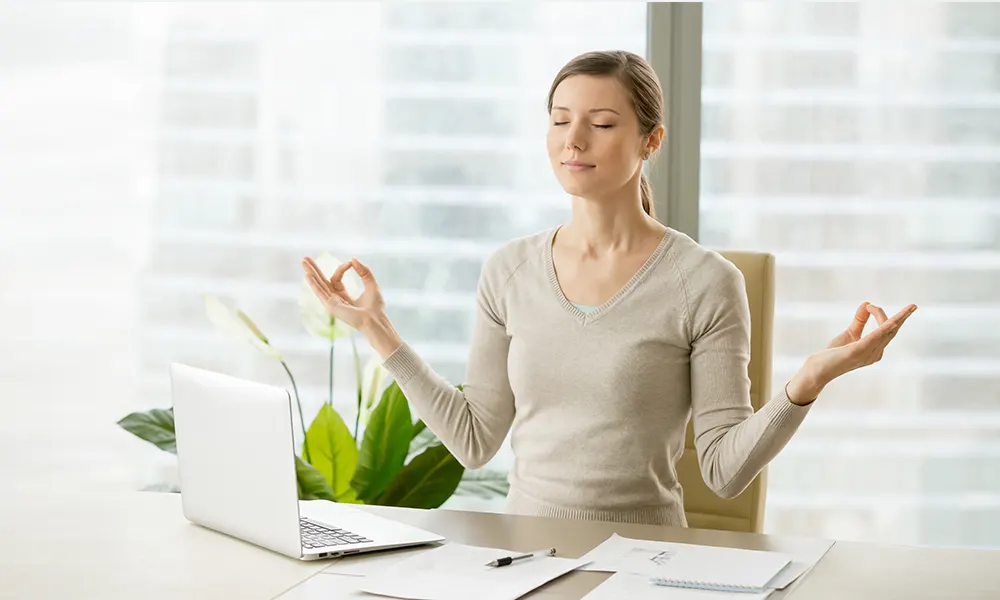Life is upsetting and now and again the pressure can overpower you, yet there are steps you can take to figure out how to unwind.
Ordinary regular exercises like shopping for food or gridlocks can make you tense. You may find it difficult to turn off from advanced gadgets and real-time features in an all-day, everyday world. Work cutoff times, taking care of the children, or managing a troublesome relationship can get you down.
The Covid pandemic, an ongoing disease, or really focusing on an older relative may be a strain.
“Stress is actually how your body and mind react to difficulties, like strain at work, [handling] the pandemic, expanding family liability, other negative encounters that might affect and make pressure,” says David Shurtleff, Ph.D., appointee overseer of the National Institutes of Health’s National Center for Complementary and Integrative Health.
The COVID-19 pandemic has featured worries around pressure.
“We’re seeing significantly more uneasiness and gloom in the course of the last year given the COVID circumstance,” Shurtleff says.
What Is Stress?
Whenever you feel overpowered or can’t deal with a circumstance, your body may react badly. The alleged “instinctive” reaction kicks in to prepare you to run, and that makes pressure.
“Encountering brief times of pressure is okay, truth be told, it’s even sound,” says Jonathan C. Smith, Ph.D., a teacher of brain research at Roosevelt University, establishing head of the college’s Mindful Initiative, and a productive writer of books on unwinding rehearses.
“Leading a life of certainty and calmness could get unfortunate and perilous. We want a smidgen of a challenge to keep us alive,” Smith says.
Yet, an excessive amount of pressure isn’t really great for you. A few circumstances, similar to the detachment you might have looked at during the pandemic, for instance, can cause progressing pressure, which, thusly, can welcome on medical issues.
It’s ordinary to feel overpowered by something like a worldwide pandemic, but on the other hand, it’s critical to track down ways of unwinding, Shurtleff says. He rehearses yoga around three times each week and utilizations a treadmill day by day to assist with monitoring stresses.
“Worrying too much about time can truly affect our bodies and our cerebrums. It can lead to truly harmful conditions such hypertension and melancholy,” he says
Kinds of Relaxation Techniques
Nonetheless, an entire scope of unwinding practices can assist you with shutting down and de-stress.
“There’s nobody shoe that fits all,” Smith says. He focuses on “five or six” approaches in view of logical perception and experience that truly take care of business for stress decrease. There are differenttreatments that you may see as accommodating.
You can do each in turn or you can rehearse some together.
Breathing Exercises
This is one of the least demanding pressure decreases rehearses on the grounds that you basically center around your relaxing.
Sit or rest in a tranquil spot, take a full breath through your nose and inhale out leisurely through your mouth, or your nose on the off chance that it feels much improved.
Texas specialist Gregory Scott Brown, MD, proposes the 4-7-8 methodology. Take in for 4 seconds, pause your breathing for 7 seconds, then, at that point, breathe out for 8 seconds.
Profound breathing can help you quiet down and unwind, he says.
“While I’m conversing with patients, I commonly start with breath work on the grounds that, once more, we as a whole inhale each and every day, except a significant number of us don’t understand that breathwork, you know, done with a certain goal in mind, is medication,” says Brown, who’s author and overseer of the Center for Green Psychiatry in Austin, TX.
Care and Mantra Meditation
Care is an old type of reflection that advances consciousness of what’s going on at the time.
It urges you to zero in on your body, your musings, and what’s happening around you.
Mantra reflection, then again, is something contrary to care. In this training, you put all your consideration on a solitary objective, similar to a mantra, a candle fire, or an expression.
In the two kinds of contemplations, at whatever point your psyche meanders – – and it will Smith says – – you essentially re-center.
It’s a cerebrum ability, he says. In that, in the initial fourteen days, you won’t have the option to do it well overall. Your psyche will continually chat and divert, and that is ordinary, that occurs.
In any case, as you practice, you’ll improve at it.
Moderate Muscle Relaxation
In this procedure, you center around leisurely fixing and loosening up muscle gatherings. You can rehearse it alongside breathing activities and directed symbolism.
Track down an agreeable spot to sit or set down, shut your eyes and take a couple of full breaths. Extend your stomach as you take in and contract it as you breathe out.
You can either begin with your head and face muscles and work your direction down your body or you can begin with your toes and move gradually up. While you center around each muscle gathering, tense and hold for around 5 seconds and unwind for 30 seconds, then, at that point, rehash.
“Straining specific muscle bunches while you’re consolidating breath work with that can, once more, impart a feeling of quiet and unwinding,” Brown says.
On the off chance that you have coronary illness, converse with your PCP before you start moderate muscle unwinding treatment.
Directed Imagery or Visualization
Envision yourself lying on a sandy ocean side with a delicate breeze tenderly blending the warm air. Utilize your faculties to smell the salt water and feel the sun as you transport yourself there. That is directed symbolism or perception.
It utilizes the force of your brain to change your concentration to a quiet time or occasion.
“On the off chance that we’re in a distressing circumstance, you know, simply moving our psyche and zeroing in on when we were ridiculously loose” is a successful method for quieting down, Brown says.
Autogenic Training
In this training, you center around feeling warmth and greatness in various pieces of your body. Then, at that point, quietly rehash lovely words or proclamations for each body part, similar to my arms feeling weighty and warm. This method can make sensations of enthusiasm and actual smoothness.
Autogenic treatment additionally joins directed symbolism and breathing activities to decrease pressure and your pulse.
Yoga and Tai Chi
These low-force practices are comparable and have been around for millennia. Both incorporate physical thus called “reflective” developments to ease pressure and lower pulse.
In yoga, you perform different extending and reinforcing stances. You stay still and spotlight on your breathing as you truly do each stance.
Judo includes slow, agile developments, similar to a dance. You’ll inhale profoundly and focus on your body as you move your weight starting with one posture then onto the next.
Contingent upon your actual capacities, you can perform the two activities while sitting in a seat, despite the fact that you typically do yoga while standing.
Before you start yoga, it’s really smart to observe an authorized proficient who can assist you with learning the essential stances and which type of yoga may turn out best for you.




